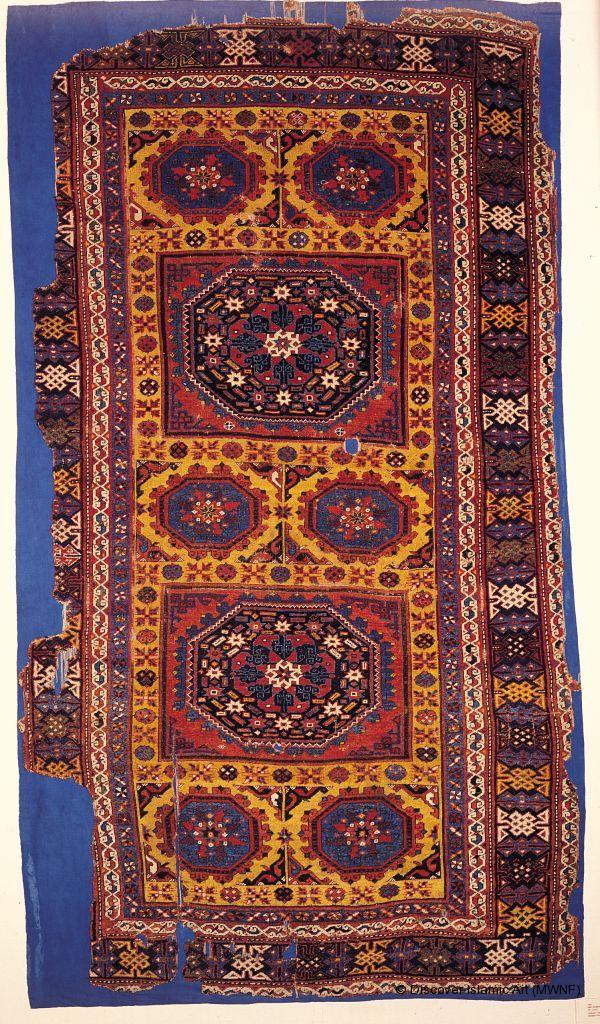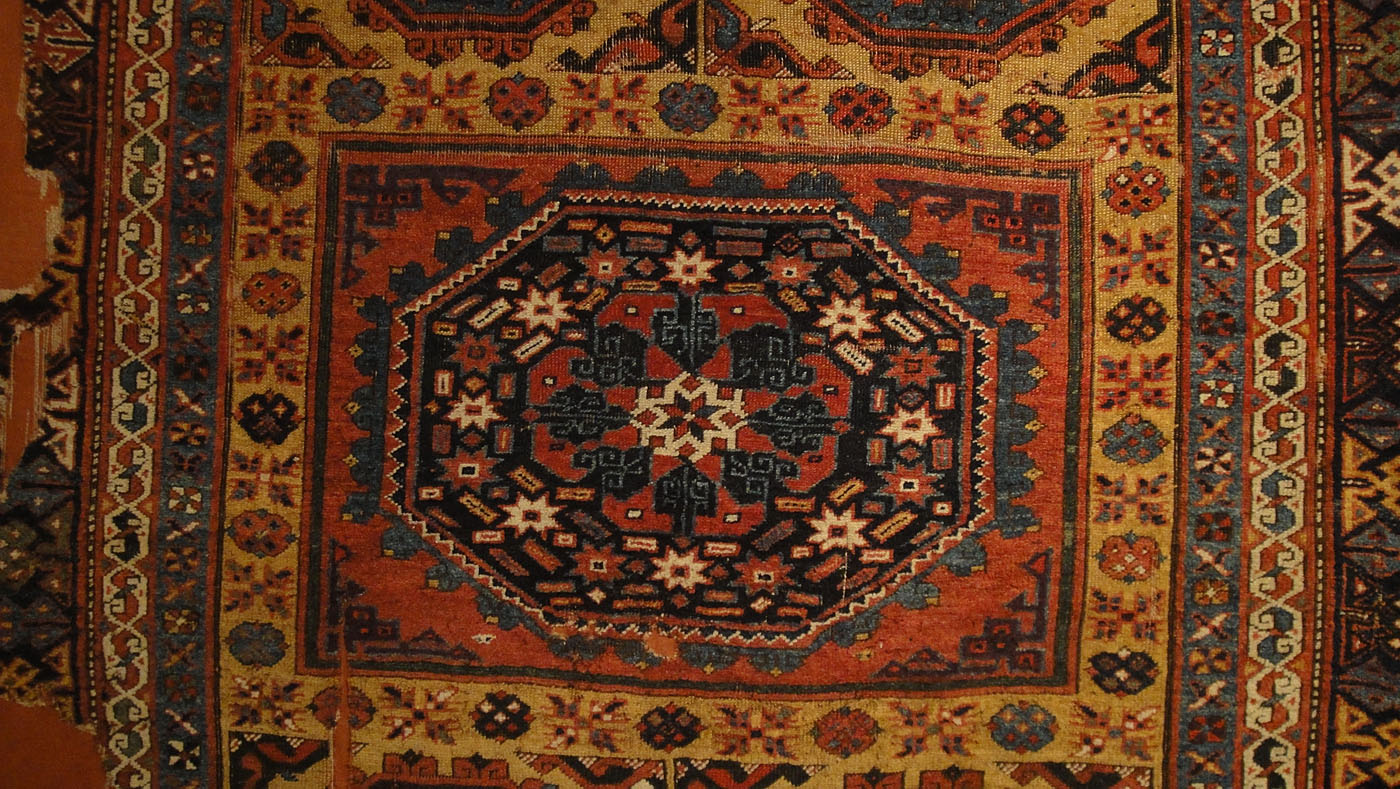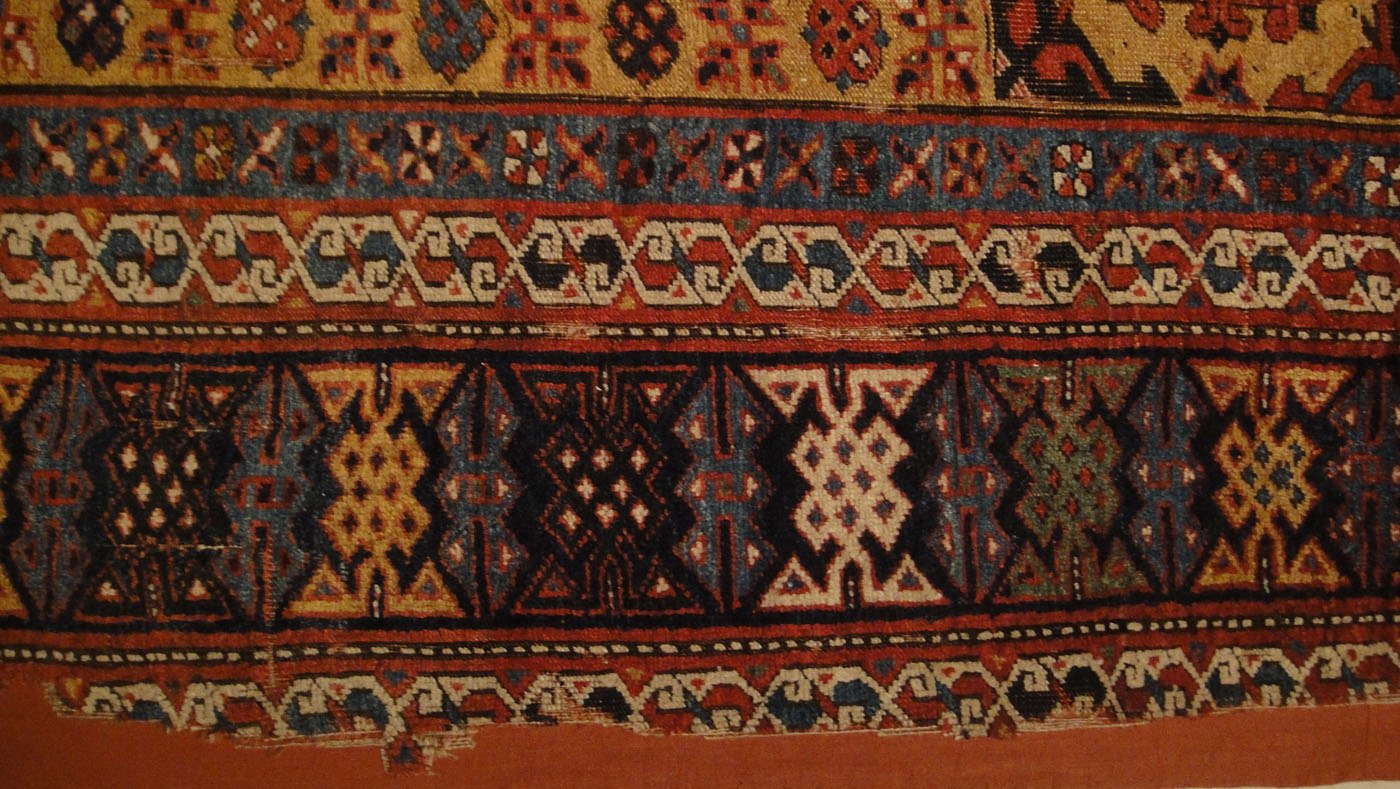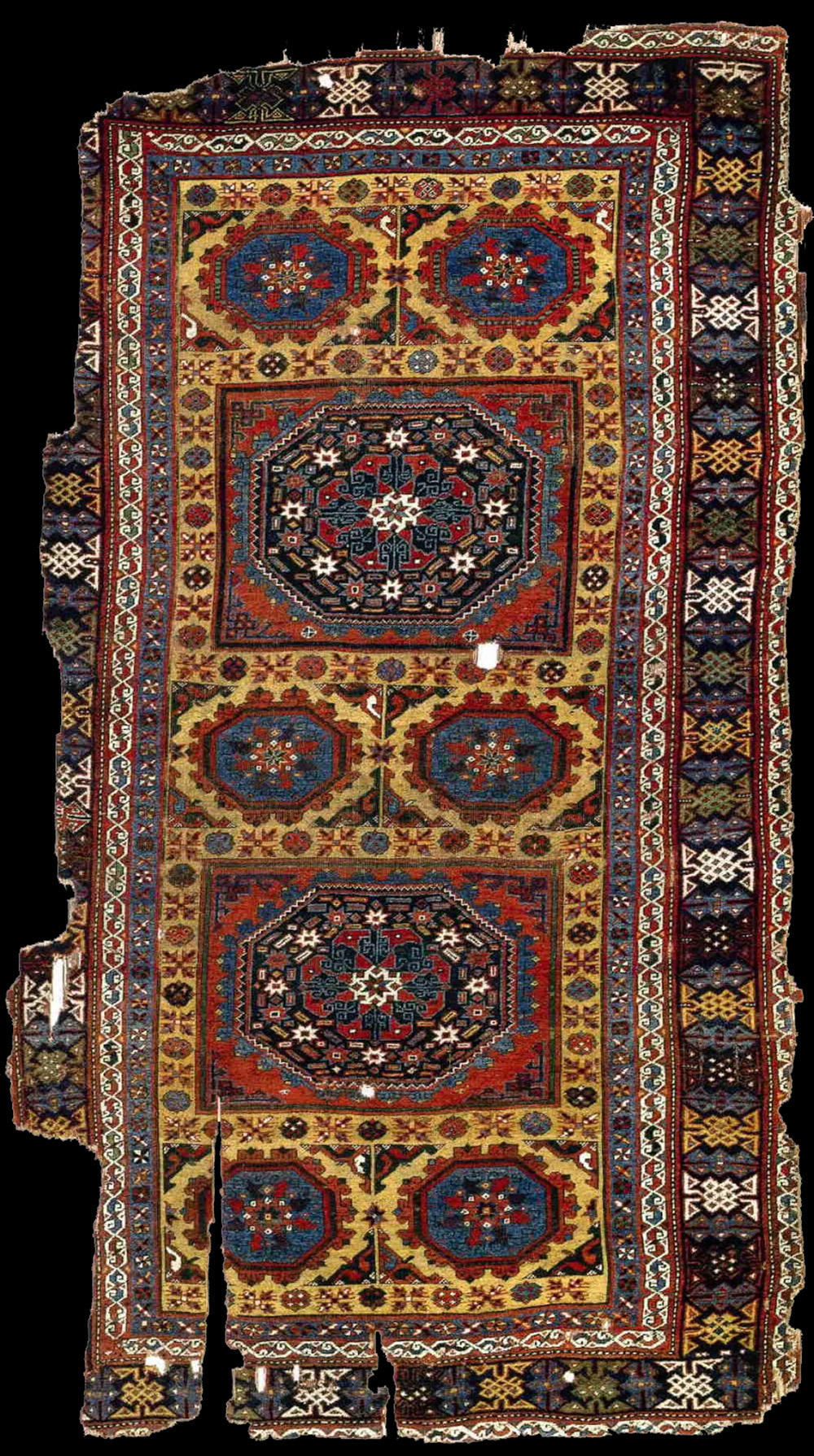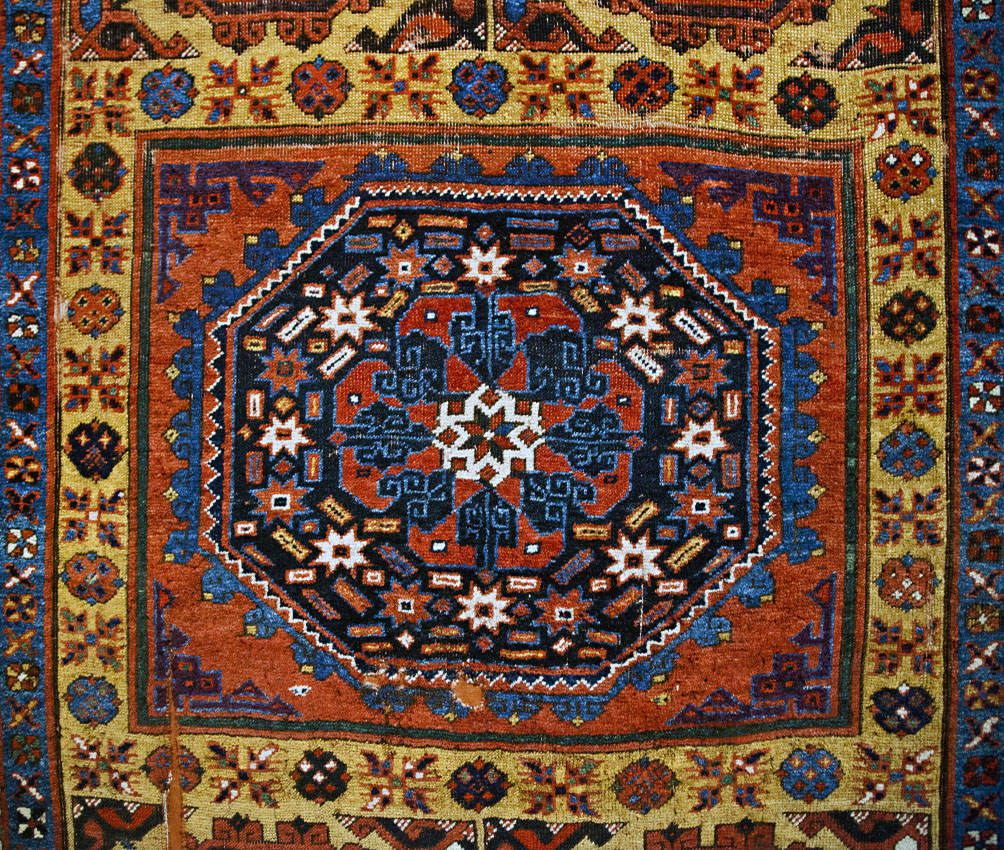Wool, knotted, carpet
Name of Object: Uşak carpet (Bergama)
Also known as: Holbein carpet
Holding Museum: Museum of Turkish and
Islamic Arts
Sultanahmet, Istanbul, Turkey
Museum Inventory Number 468
Dimensions: Length 292 cm, width 170 cm
Material(s) / Technique(s): Wool on
wool, woven with the Turkish double knot also known as the Gördes knot.
Date of the object: Hegira 10th / AD
16th century
Period / Dynasty: Ottoman
Provenance: Western Anatolia (Bergama
Uşak region), Turkey.
Description: This is a carpet woven in the region of Western
Anatolia in the AH 10th / AD 16th century. Both warp and weft are of wool.
The weaving technique used is the 'Turkish double knot', known as the Gördes
knot. The carpet is divided into five compartments: three pairs of octagons
alternate with large rectangles on a dark-yellow ground and within a border
of rosettes. Within the rectangles, which have red backgrounds, concentric
octagons make up the primary motif. At the centre of each octagon is a
six-armed star rosette. Around the inner octagon, resembling a floral
rosette because of the hook and interlace motifs around the central star,
the field is filled by a group of stars with stylised red and white leaves
among them. The main octagon is completed by yellow and blue interlace
motifs, while corner-pieces made up of hook motifs complete the large
rectangle. Two narrow borders with chain and leaf motifs are in turn
surrounded by the main border, which has groups of stylised kufic script on
a dark-blue ground. The imitation kufic interlace motifs, which are white,
yellow, green, and blue with red contours, are made to contrast with the
contrary colours placed between them.
Turkish carpets, which had an important place in Ottoman trade, were
exported in large numbers to European markets beginning in the AH 8th / AD
14th century. As an expensive export ware, these carpets met with great
demand from noble families, church officials, and the wealthy middle classes
who engaged in trade. These groups were also highly interested in painting,
and they had the valuable carpets they owned painted into the portraits of
themselves with which they adorned their churches and palaces.
These paintings, produced by many European artists beginning in the AD 15th
century, have played an important role in establishing the dates and
typology of carpets. Some carpets, known as 'Holbein' carpets, appear in
paintings by the German artist Hans Holbein (AD 14971543), while some are
known in carpet terminology as 'Holbein' carpets even though they do not
appear in any paintings. The present work is judged to be part of the group
known as 'Holbein IV'.
How object was obtained:
The carpet was transferred to the Museum in 1911 from the Shaykh
Baba Yusuf Mosque in Sivrihisar as part of the initiative begun in the 19th
century to collect up artworks from all over the Empire.
How date and origin were established:
The carpet is dated to the 10th / 16th century on the basis of the
characteristics of the motifs and composition as well as paintings in which
similar carpets appear.
How provenance was established:
It is well known that there was a thriving carpet-making industry in Bergama
and Ushak in the 10th / 16th century. The presence of particular motifs and
a style based on geometric division, both of which are still found on
carpets produced in Bergama today, suggests that the carpet was woven in
Bergama rather than Ushak.
Selected bibliography:
Aslanapa, O., Türk Halı Sanatının Bin Yılı, Istanbul, 1987, p.94, pl. 127.
Erdmann, K., Seven Hundred Years of Oriental Rugs, London, 1970, p.105.
Erdmann, K., Der Türkische Teppich des 15. Jahrhundert, Istanbul, 1958,
p.32.
ölçer, N., et al, Turkish Carpets from the 13th18th Centuries, Istanbul,
1996, pl. 42.
Prepared by: Gönül Tekeli
Translation by: Barry Wood, İnci Türkoğlu
Translation copyedited by: Mandi Gomez
MWNF Working Number: TR 68 |

